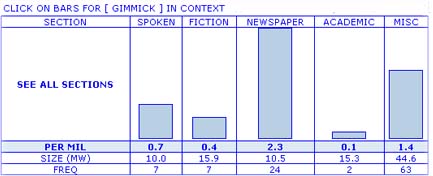5. Appropriate language: mind the register
You talk with your professor in a different way than you do with your friends. You talk to the same professor again in a different manner depending on whether you meet for a seminar or accidently run into each other in a queue at the cafeteria. You use different vocabulary in an essay than in a personal e-mail, and so on. All this has to do with the style, or more precisely, with the register.
Academic register. Academic English is formal by nature. However, this does not mean that it should be stilted: stiffly formal and unnatural. Mastering the academic style requires a good knowledge on the typical traits of the register, as well as an understanding of grammatical structures and word formation. The previous chapter started the work on word formation, and this final chapter in this section introduces other ways of using the corpus for improving your academic English.
Appropriate and accurate English
The people who speak English as their first language are exposed to the vocabulary and structures of the language all their lives, and develop a more or less thorough understanding of the registers naturally. For learners of English this usually takes more time and effort, as an understanding of even one register requires regular contact with suitable language items. Using a corpus can offer a shortcut to this kind of understanding, as it enables you to select the language items and the register you want to explore.
The BNC/COCA interface allows for you to limit your search within a specific register or section of language. You can benefit from this in your own learning: knowing the most common words in a register helps you to use English in a more appropriate and accurate way.
Good to know.
IN BNC each register/section is divided into subregisters: in the academic domain you have for example education, natural sciences, social sciences, and humanities and arts separated as subregisters; under spoken language you can find for instance lectures from several domains, broadcast discussions, religious sermons, and courtroom interactions.
A. Common words in the academic register
Try it yourself!
In this exercise we'll explore the academic register in terms of the most common words.
Read the general instructions first and then run searches on the language items
listed below. Remember to reset your search settings before starting a new search.
- Don't write anything in the search string box, but from the POS LIST underneath select a POS-tag of you choice and place it in the WORD(S) field.
- At the Section 1 panel, select ACADEMIC from the scroll menu.
Following the instructions above, examine the academic register by looking up the most typical members in some of the word classes, for example
- adjectives (tag adj.ALL or [aj*])
- verbs (tag verb.ALL or [v*])
Notice also, that the first ten or twenty items listed in the search results are often common to English in general - for example the adverbs more, only and also; and the verbs make, be and do. With verbs you may also use the tag verb.LEX that omits verbs such as have and be from the results.
Search tip.
You can also try the search with one of the subregisters that can be found towards the end of the SECTION scroll menu. For example, in BNC W_ac_soc_science limits the search to the written texts from the social sciences domain, and S_lect_humanities_arts gives results from lectures on humanities and arts. In COCA the sections are arranged a bit differently.
B. Comparison between two registers
A good way of getting to grips with the qualities of the academic register is to compare it with something to which it contrasts. For example, the journalistic register makes use of colourful adjectives and short paragraphs which intend to grab the readers' attention, which is not typical for the academic style. The corpus interface offers a possibility of comparing the use and frequency of language items between two registers, thus helping you to understand their characteristics.
Try it yourself!
We'll try a comparison between the academic and the fiction registers with two language items, and see what they can tell about the two registers. Here are the general instructions:
- Select the POS-tag from the POS-LIST menu.
- Under the Section 1 panel choose ACADEMIC.
- Under the Section 2 panel choose FICTION.
- Click Search.
- Notice that the SORT option up in the DISPLAY panel automatically sets itself to Relevance (the reg1/reg2 ratio). By selecting Frequency you get slightly different results. Read more about this through the ?-symbol in the Display panel.
The language items we are going to look at are
- the negative form (not, n't) - tag neg.ALL or [xx0]
- personal pronouns - tag pron.ALL or [pn*]
Read the questions in the text field below, and go to the corpus to run the first search: the negative in the academic and in the fiction register. Answer the questions 1 and 2, writing your comments in the text field. Do the same again with pronouns, and come back to answer questions 3, 4, and 5. When ready, click Bernie the Owl for feedback.

PM1 and PM2 = occurrences per 1 million words in selected sections.
C. Comparison across the registers
The BNC/COCA interface makes it possible also to compare the occurrence of a word, expression, class of words and grammatical structures across multiple sections. The main division in BNC is between spoken, fiction, news and academic registers.
The search results for this comparison across the registers are presented in a form different from what you are used to. The results appear in the upper part of the right frame in the form of a chart, looking like this:

From the chart above we can conclude for example, that the search item is more common in newspapers than in any other register (2.3 per million), and that in the academic register it can be rarely found (2 instances, 0.1 per million). Clicking a light blue bar gets you to the KWIC-list of the particular section. Clicking the SEE ALL SECTIONS shows you the distribution in all sub-sections.
Try it yourself!
We'll try a search with some language items to see how they are spread across the registers. The general adjustments needed for comparison are the following:
- Type the search string in the usual textfield, or select a POS-tag from the drop-down menu
- Under Display panel (up left), select Chart
- Click Search
- Make sure to reset the search settings before running another search.
Following the instructions above, run a search across the registers with the following language items and consider the questions below. When ready, click Bernie the Owl for feedback.
- lexical verbs (tag verb.LEX or [vv*])
- the past participle of lexical verbs , eg. forgotten (tag verb.EN or [v?n])
What do the results tell you about the use of verbs in the academic register?
What do you think explains the frequency of the past partciple in the academic register?
Search tip.
You'll get more information by clicking the register name above the chart and accessing a KWIC-list through the listed items.

D. Comparing the use of synonyms in registers
Good to know.
For comparing between registers there are two options that provide a bit different information from one another. The first option is to run a search with the word, phrase or POS-tag first in one register and then in the other, and compare the results. The second option is to select the register you are interested in as Section 1, and select the register to which you want to make the comparison as Section 2.
Try it yourself!
Option 1. To get started on this final exercise, we'll try a search according to the first option presented in the tip box just above. Instead of using individual words, phrases or POS-tags we'll try a simultaneous search with five verbs that often are used for same purpose and have a similar meaning. Follow the instructions below:
- Copy the search string and paste it in the search string box
guess/suppose/imagine/estimate/infer
- Under the Section 1 panel choose ACADEMIC.
- Click Search.
- Type the verbs in their listed order to the assigned textbox below.
- Run the same search again, but this time set Register 1 to SPOKEN.
- Write the verbs again in the other textbox and consider the questions underneath.
What do the results tell you?
Are the results in BNC different from those in the COCA?
Option 2. To understand how the two options differ from one another, let's try the second option that was presented in the tip box above. Here are the instructions:
- Use the same search string as previously
- Set Section 1 to ACADEMIC.
- Set Section 2 to SPOKEN.
- Click Search.
Good to know.
This search takes the academic register as a norm and compares the occurrence of the language items in the spoken register to their frequency in the academic register. The results are displayed in the form of a list, starting from the item that is the most common in the academic register as compared to its use in the spoken register.
Examine the search results closely. The columns Tokens 1 and Tokens 2 tell you the number of occurences of each search word in the corresponding registers. The figures in the PM 1 and PM 2 columns are mutually comparable, as they are independent of the size of the register. However, the most important of the columns is the one on the extreme right, titled Reg1-2 ratio. This tells you, how many times more often each word in the search string can be found in the academic register than in the spoken register. If you compare the order of the listed items to that yielded with Option 1 above, you'll notice the difference.
With POS-tags, this search option works well for contrasting a register to an other, and examining the traits that characterise that particular register. However, understanding the search results and knowing that the listed search results are not a list of the most common words in the register is essential for being able to benefit from this search option.
We congratulate you for having completed this section of the Corpus Library. Navigate to the next section, Let's talk MICASE.
|



